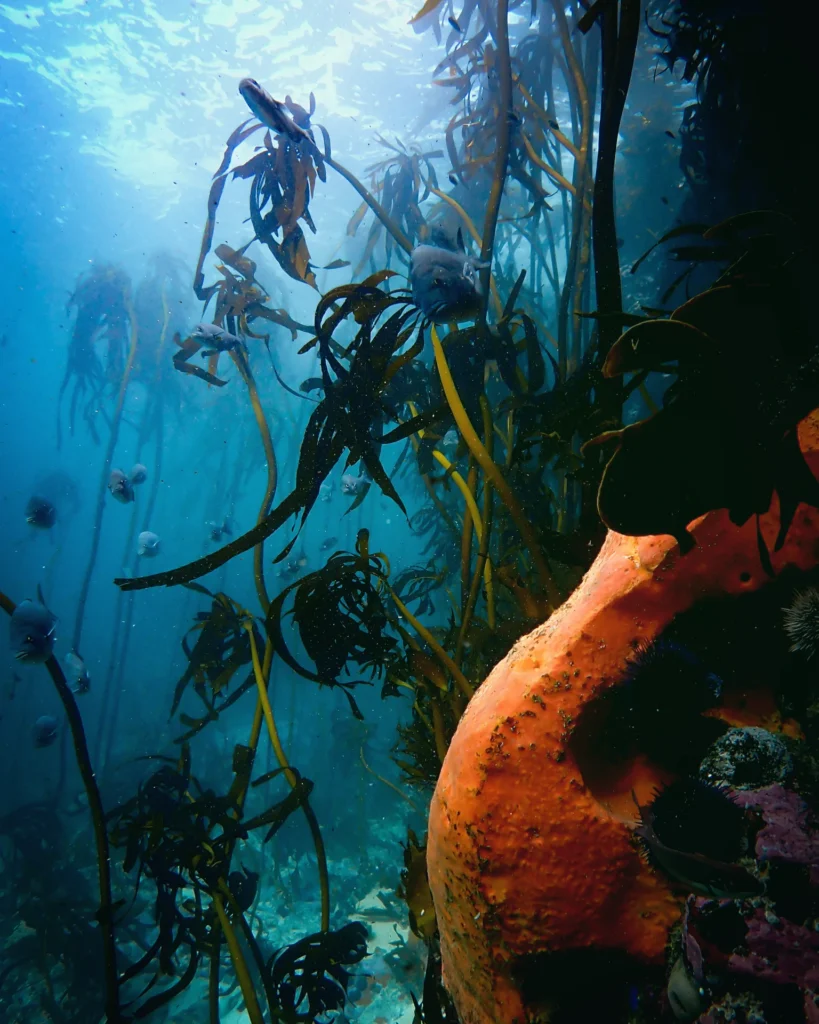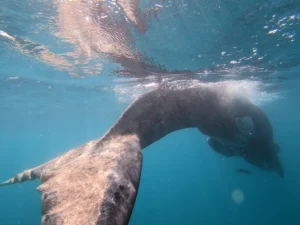Sea sponges are a curious group of organisms that have long since raised questions regarding their classification as either plants or animals. Originally thought to be plants due to their sessile nature, sponges have subsequently been reclassified as animals due to their lack of plant vascular systems or ability to create their own food through photosynthesis. Instead, sponges display an animal-like method of obtaining prey by manipulating the surrounding environment.
As a cosmopolitan group of organisms, sponges may be found across the globe, from the intertidal zone to the deepest parts of the ocean in both tropical equatorial regions as well as cooler high latitude zones, with sponge gardens even having been recorded deep under Antarctic ice shelves! They are easily invasive, as they pioneer onto boats, and many of the sponge species found in yacht clubs or harbours are those of foreign waters. Most of the snorkeling and freediving sites we visit have sponges living on the rocky reef.
Sponges are among the oldest living species, with the fossil record dating back roughly 600 million years. Approximately 11 000 species have been described, around 8500 of which are formally recognized. Sponges are known by scientists as being notoriously difficult to classify, as the size, consistency and form is highly variable between individuals, and even those of the same species. Some may be hard and resilient, while others are soft and fragile. They range from millimetre-sized individuals to metre-long forms. These differences are dependent on the nature and structure of the sponge’s cellular makeup and can largely be influenced by environmental conditions.

Despite their sedentary appearance, sponges are in actual fact, incredibly active. Sponges commonly have a few large vents, along with many microscopic pores. Specialised cells with hair-like flagella beat to generate internal water currents, drawing in water through the pores lining the sponge walls. This constant water inflow allows the sponge to filter food particles and extract oxygen. The water then exits through the large vents, and the cycle continues.
Sponges ensure reproductive success by utilising multiple reproductive strategies. Asexual reproduction occurs when small groups of cells break off and reestablish in a new location, where they grow into individual adult sponges. In addition, sponges are hermaphroditic and reproduce sexually as well. As both male and female reproductive organs are present within an individual, sponges are more likely to succeed in colonising new areas by producing large numbers of reproductive cells for external fertilisation. Eggs and sperm are however usually released at different times in order to prevent self-fertilisation.
Sponges avoid predation through a variety of defence mechanisms. Structural defence includes the deterrence of predators by spiny spicule cells with a fibreglass-like consistency. These spicules in the sponge wall are indigestible and can cause irritation in the digestive system, effectively keeping most predators at bay. Furthermore, sponges use chemical defences by producing toxins, which deters all but a few well-adapted specialist species. Some species of nudibranch can withstand this chemical defence and store the sponge toxins to use as their own protection.

The sponge crab is another species that benefits from the sponge’s defence mechanisms. It places a piece of sea sponge on its carapace where it attaches and grows, providing the crab with a disguise and protection from predatory species. In return, the sponge benefits by feeding on the crabs’ discarded food particles. We often see sponge crabs at Windmill Beach. Lookout for a golf ball sized sponge, it might be a sponge crab!
Sea sponges are prolific in the Cape due to the abundance of kelp debris as a food source. They serve as essential ecosystem engineers by influencing water quality within the environment. Sponges fulfil a functional role by collecting bacteria, filtering water and processing nutrients, as well an aesthetic one due to their bright colours and impressive visual contribution to reef beauty and diversity.



